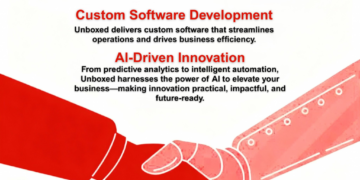Implementing an Enterprise Resource Planning (ERP) system is a transformative step for any business aiming to improve efficiency, data management, and operational control. The ERP implementation process involves several stages, from planning and analysis to deployment and support. Each step ensures that the ERP system aligns with business goals and delivers long-term value.
What Is the ERP Implementation Process?
The ERP implementation process refers to the structured method of installing, configuring, and integrating an ERP system within an organization. It combines business strategy, technology setup, and user adoption efforts to centralize operations under a unified platform. This process ensures all departments—such as finance, HR, supply chain, and sales—work together through a single digital ecosystem.
The success of ERP implementation depends on proper planning, realistic timelines, and clear communication between stakeholders. When done right, it helps organizations make data-driven decisions and eliminate redundancy.
Why ERP Implementation Matters
Businesses today rely heavily on data and streamlined workflows. Without an ERP system, managing operations across departments becomes time-consuming and error-prone. The ERP implementation process brings automation, transparency, and control. It connects various business processes, enabling faster reporting, better resource allocation, and higher productivity.
By adopting ERP, companies gain real-time visibility into performance metrics, reduce manual work, and improve customer satisfaction through accurate information and faster response times.
Key Stages of the ERP Implementation Process
Although each organization’s journey may differ, most follow a similar structure. Understanding the stages helps teams prepare and manage the transition efficiently.
1. Planning and Strategy Development
The ERP implementation process begins with strategic planning. Businesses define their objectives, scope, budget, and timeline. This phase involves selecting the right ERP solution that fits organizational needs and identifying key performance indicators (KPIs) to measure success.
Stakeholders from all departments collaborate to document existing processes and determine what needs improvement. This groundwork ensures the ERP system aligns with both short-term and long-term goals.
2. Business Process Analysis
Before any software setup, a detailed analysis of current workflows takes place. The goal is to identify gaps and inefficiencies in existing systems. During this phase, consultants and internal teams work together to map out how the ERP will improve these processes.
A well-executed analysis ensures that the ERP configuration matches the company’s operations, not the other way around.
3. System Design and Configuration
In this phase, the ERP software is configured based on business requirements. The ERP implementation process focuses on creating modules that fit specific functions such as accounting, HR, procurement, or inventory management.
Customization is key here. The ERP system must be tailored to handle unique workflows without overcomplicating the architecture. The design phase may also include setting user roles, permissions, and reporting dashboards.
4. Data Migration
Data is at the core of any ERP system. Migrating accurate and clean data from legacy systems is essential to the success of the ERP implementation process. Teams extract, cleanse, and validate data before importing it into the new system.
This step requires precision because errors can disrupt operations later. Proper data mapping and testing ensure that information transfers seamlessly and remains consistent across modules.
5. Testing and Quality Assurance
Testing plays a crucial role in identifying issues before full deployment. The ERP implementation process includes multiple test phases—unit testing, integration testing, and user acceptance testing (UAT). Each ensures that the system works as expected and meets business needs.
Testing helps verify that reports generate correctly, workflows function smoothly, and all modules communicate properly. Any detected bugs or inefficiencies are fixed before going live.
6. Training and User Adoption
Even the best ERP system fails without user engagement. Training programs are therefore a vital part of the ERP implementation process. Employees are trained to use the system effectively through workshops, tutorials, and hands-on sessions.
Encouraging feedback and addressing user concerns early helps improve adoption rates. The more comfortable staff feel using the system, the faster the business benefits from the ERP.
7. Go-Live and Deployment
After thorough testing and training, the ERP system is ready for launch. The go-live phase marks the transition from old systems to the new ERP platform. During this step, performance is closely monitored to ensure stability and accuracy.
Businesses often choose a phased rollout—starting with key departments—to minimize risk and ensure smooth operations during the transition.
8. Post-Implementation Support
The ERP implementation process doesn’t end at deployment. Continuous support, maintenance, and system optimization are necessary for long-term success. Post-implementation activities include fixing technical issues, updating modules, and evaluating performance against initial goals.
Regular monitoring helps identify new opportunities for automation and ensures that the ERP system continues to deliver value as the business evolves.
Common Challenges in ERP Implementation
While ERP systems offer great benefits, challenges can arise. Common issues include resistance to change, data migration errors, budget overruns, or lack of clear communication between departments. Understanding these challenges early in the ERP implementation process helps organizations plan mitigation strategies.
Choosing the right consultants, maintaining stakeholder involvement, and setting realistic goals are vital to overcoming these hurdles.
Best Practices for a Successful ERP Implementation Process
Success in ERP implementation relies on teamwork, preparation, and adaptability. Businesses should select experienced consultants, allocate proper resources, and maintain open communication. Continuous training and feedback loops ensure the ERP system remains effective and up to date.
A well-managed ERP implementation process results in increased efficiency, cost savings, and improved decision-making capabilities across all departments.
Conclusion
The ERP implementation process is more than just a technology upgrade—it’s a complete transformation of how a business operates. By integrating all functions into one cohesive system, ERP solutions empower organizations to work smarter, faster, and more effectively.
With proper planning, clear objectives, and ongoing support, any business can achieve a seamless ERP transition that delivers measurable growth and long-term success. for blog visit our site submityourpr.

















